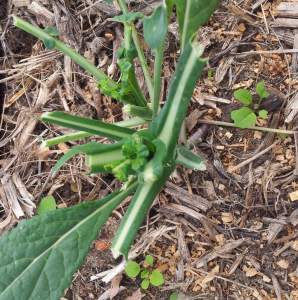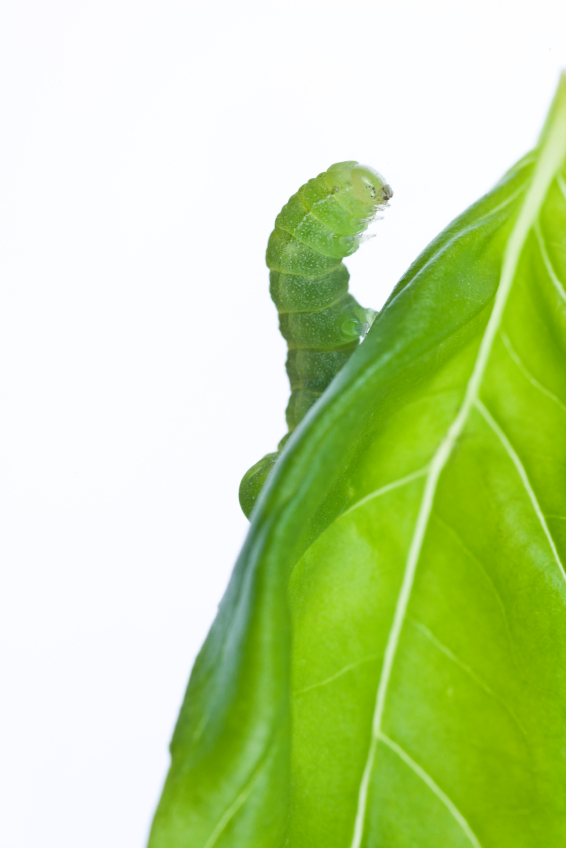There are plenty of organic options for controlling pests and diseases in your Kitchen Garden, and I will always give you advice on natural methods as an option to using synthetic chemicals or anything that could cause harm.
Here and some practical tips as well as broader gardening advice – as healthier plants are less vulnerable to attack. I find that we all go OK with organic gardening – using composts and manures – but when we see some little creepy crawlies attacking our plants, it is very tempting to get the spray gun out!
Organic pest control for vegetable gardens is important when we are eating out of our garden each day, as we can’t manage issues around withholding periods like commercial growers do. And you don’t want to have to yell out No Stop to the kids when they are about to grab a snow pea…
Growing Conditions
If your garden is correctly designed and managed, it will help reduce some incidences of pests and disease. For example, mildew in your zucchini/cucumber/pumpkin vines can be reduced by ensuring they are grown over an open frame (for air circulation) and watered from the base of the plant rather than splashing water all over the leaves.
Correct spacings on your tomato plants will also reduce mildew disease, and insects can be better contained.
Removing Insects
Once you get in the habit of visiting your kitchen garden each day, you will find yourself more in tune with what is happening – and spot any changes such as holes in your leaves. In this case, look under the leaves and in the centre of the plant for caterpillars.
THe green grubs can be bloody hard to spot – can you see them in this picture? 
Just flick them off or put them in a pile on the lawn for the birds to enjoy. Not all leaf eaters are easy to spot and grab. Aphids can be removed with a jet stream of water. Scale is visible but needs to be scraped away (maybe wear gloves) or you can try washing them off.
Also, pop out to the garden at different times of the day and in different conditions to see who is out and about! Snails and slugs are more likely to come out at night or after a watering.
[box type=”alert”]Safety note: The Wooly Catepillars (very fuzzy brown ones) can irritate your skin and eyes, so wear gloves or use tongs to get rid of them.[/box]
Setting Traps
There are some handy non-toxic ways to trap insects. Try using yellow sticky paper or traps to control whitefly and fruitfly (though you will catch some good guys too). Use a low saucer of beer to catch snails, or bunched up paper in the bottom of empty pots to trap earwigs.
Healthy Plants
Just like us, when we are stressed and run down we are more vulnerable to getting sick. Stress for plants isn’t how many bills to pay, or having hassles with the kids or work – it is lack of water, or inconsistent water, missing key nutrients, or inadequate light. So watering and feeding your plants correctly so that they are healthy and vigorous makes a huge difference to their ability to cope with pest and disease attacks – this means that they can continue to grow and produce while still having a bit of stuff on them.
Keep it Clean
Some of the bad stuff like viruses and fungal spores in the garden can be spread from plant to plant if you don’t take proper care of cleaning up. Some simple things to remember:
- wash your hands before handling seedlings or planting seeds
- wash out plastic pots before using, and rinse in a weak bleach solution
- wipe off your secateurs after use
- remove soil from your spade and fork before moving into a new garden bed
- when removing leaves or plants with mildew, try not to shake them around too much! and put them into your green recycling bin rather than the home compost
Mix it Up
You might have heard the term crop rotation before, this means that you move your plantings each year – so the same TYPE of plants are not always in the same spot.
You need to know your species groups to get this right, basically you have got Brassicas (broccoli, cauli, kale, cabbage and brussels sprouts) , Solanacae (tomato, capsicum, chilli, eggplant), Curcurbits (pumpkin, cucumber, melons) and Legumes (beans and peas).
As a simple rule, swap your beds around each year…..it helps to have a bigger garden with 3 or 4 distinct beds to make this work.
Companion Planting
This is a planting approach that considers the buddy factor – it is believed that some plants can help deter insects, provide shelter or support, suppress weeds, or enhance the flavours of their companions when planted together.
Common garden companions are Tomato + Basil, and Nasturtiums are often recomended as a decoy plant to deter white moths from your cabbages. I really don’t know how much of this is backed up by science – but I do know that variety works better than monoculture.
Think Before you Spray
Maintaining a healthy ecosystem is all about balance – and widespead application of pesticides can take out the good guys as well as the ones eating your veggies. Bees, ladybugs, and certain kinds of wasps all play a role in controlling other bugs in the garden. And many sprays and baits can also be harmful for your pets, frogs, and lizards.
and always seek advice…..
If you are not sure what you are dealing with, or what is your best option to control it – please ask!
